Song, dance and Swarna Kamalam
K. Viswanath’s 1988 Telugu movie starring Bhanupriya is a masterclass in storytelling through music and movement
No discussion about classical music and dance in Indian cinema is complete without mentioning K. Viswanath’s filmography. For most Telugu audiences, he’s where the conversation begins. We call him Kala Tapasvi, an ascetic of the arts. His films captured a grand legacy of music and dance traditions and explored their evolving place in Indian life.
They were also social commentaries. His characters were flawed and imperfect. Sankarabharanam (1980) explored the idea of purity and whether it makes one eligible to perceive art. Saptapadi (1981) navigated casteism. Swati Muthyam (1985) touched upon widow remarriage. In Sagara Sangamam (1983), the talented Kamal Hasan played a passionate dancer who loses his sense of ambition due to circumstance but eventually reclaims his sense of purpose, by choice.
Vishwanath’s cinematic genius lay in restraint. He never preached; he simply told stories. Every one of his movies is a treasure, but if I had to pick just one, Swarna Kamalam. Always. The title translates to “a golden lotus,” and the film was released in 1988.
Telugu cinema in the 80’s was quite the storm. This was the era of the “angry young man.” A new generation of male actors rose to stardom—Chiranjeevi, Nagarjuna, Bala Krishna and Venkatesh—often playing virtuous men seeking vengeance or emerging as saviors in an imperfect society —Khaidi (1983), Kaliyuga Pandavulu (1986), Muddula Mavayya and Siva (1989). Vishwanath's films were in the eye of this storm. They offered peace and serenity and were aspirational to actors at the time. In the rainbands, films with new stories and experimental characters saw commercial success. My favourites are two films from 1985: the crime thriller Anveshana and the story of an aspiring footballer in Vijeta.
This era had great music. Dance numbers and a good soundtrack were essential to a film’s success. Some examples are the albums of Challenge (1984), Abhinandana and Pasivadi Pranam (1987). Chiranjeevi or Mega Star, as we call him, had taken over the industry with his break-dance. His moves in padaharella vayasu (Lankeswarudu, 1989) are my favourite.
The actresses of the time were goddesses of movement on-screen. We had the likes of Jaya Pradha, Jaya Sudha, Vijay Shanti and Sumalatha. Even queens from other industries: Radha, Radhika, Ramya Krishnan, Meena, Shobana, Sri Devi and Suhasini had made Telugu cinema their own. Some of them were classically trained. While all of them were great dancers, Bhanupriya stood out to me.
Big-eyed and trained in classical dance by S.P. Anand*, she was first recognised by director K. Bhagyaraj while still in dance school in 1982. She had been in the industry for about five years and had made films in three languages by the time Swarna Kamalam released. If Wikipedia is right, it was her 60th film.
She oozed talent and confidence. In an interview with Lehren (in what I can only assume was the 80s), when asked if she wanted to be known as an actress or a star, she responded simply that she wanted to show [the world] who “Bhanupriya is.”
In Swarna Kamalam, she played Meenakshi, a Kuchipudi** dancer who inherits the legacy unwillingly from her Guru and father Seshadri Shastri. She dances like a dream but hates every second she does it. She wants to have a “modern”, high-paying job and wear prim and proper clothes. She waltzes through life deceiving her visually impaired father, till she meets Chandra Shekhar or Chandram, played by Daggubati Venkatesh, who was only 10 films old at the time. Chandram is a billboard painter and quickly realises that she was born to dance. He makes it his mission to see her on stage. He is a difficult character to like. Some have argued he is problematic. But, Venkatesh plays him with subtlety and grace.
Swarna Kamalam is what happens when subtle storytelling meets great passion and impeccable talent. The film was a commercial hit and went on to win several awards. It remains a classic in Telugu cinema.
It is the stuff of legends, literally. Ilaiyaraja composed its music. The likes of S.P. Balasubramaniam, S. Janaki, P. Susheela and Vani Jairam lent their vocals. Sirivennala Seetarama Shastry’s lyrics made words dance. Sainath Thotapalli wrote its dialogues. Icons like Odissi’s own Kelucharan Mohapatra and his disciple Sharon Lowen, Kathak’s Gopi Krishna, and several other artists like Srinivas and K. Uma Rama Rao worked on the choreography. Lowen also played herself in a cameo.
The film features several classical and semi-classical dance sequences. But what is striking is no two sequences are the same. No “hookstep” nor expression in a song is the same. Each song is a chapter in Meena’s journey and documents her changing relationship with dance, ambition, and her legacy. The music pours the soul into her story.
Aakasham lo aashala harivillu: “There is a rainbow of hope in the sky” introduces Meena. This is a song of ambition and carefree joy. Draped in a cotton saree and hair tied up with a ribbon, “sandramlo ponguthunna alanaiponaa, sandello rangulenno chilikenaa,” she sings. She wants to become an ascending wave in the ocean and spread colours of joy. The song starts with a naughty introduction. The choreography is simple and the lyrics pack in a lifetime of dreams. Meena dances in a park while on her way to run an errand. It captures an incredible character detail: for someone who hates dance, the thing Meena does when she is happy and hopeful is dance!
But then comes Koluvai unnade, the “practice” song choreographed by Kuchipudi scholar K. Uma Rama Rao. Just before this song, Meena tries to throw her anklets into a well, hoping she can escape dancing. But, Chandram, who becomes the bane of her existence, retrieves them. Meena then rehearses at home while her sister sings and her father keeps rhythm. It is a traditional song and she moves like a dream. The neighbours watch in awe, but her attention is divided. Her body is moving, but her mind is distracted. She looks as though she doesn’t want to be there.
As the story progresses, Chandram, like mentor figures in most movies, is so determined for Meena to realise her potential that he paints her images across the city’s billboards. These secure her a concert. Furious and frustrated, she deliberately sabotages her performance, setting off a chain of events, ultimately culminating in her father’s death on stage.
When I was younger, I wondered why Meena failed to see how talented and blessed she was. But more recently, I have become more empathetic. Her catchphrase in the film is “artham chesukoru,” (nobody understands). She was a woman of spunk and ambition who lived in a world where everyone, especially the men in her life, tried to tell her what was best for her. Shiva poojaku chigurinchina siri siri muvva, my favourite song in the album, explores her dilemma. I call it the “debate” song.
It is one of two dream song sequences in the film. The other is Ghallu ghallu. Just before the song, a grieving Meena confronts Chandram. She tells him that true respect is recognising another person’s wishes, not forcing them into something they are not interested in. In the song, the two are having an imaginary conversation. He visualises her performing Manipuri, Kuchipudi, Odissi and Mohiniyattam, clad in heavy traditional attire. She responds by dancing in a light and happy salwar kameez instead. This is what gives her freedom.
Chandram compares Meena to a divine anklet (not a flower) that has blossomed for the worship of Shiva—the god of dance. She, on the other hand, compares herself to a “talapula naava”, a boat of thoughts whose sail must go on. The magic of Shastry’s lyrics is at full display here.
Padamara padagalapai merise taralakai, raathrini varinchake sandhya sundari.
Thoorupu vedhikapai vekuva narthakivai…dhaathrini ouripinche kaanthulu chindhani.
Chandram cautions: Don’t let the blinking stars of dusk trick you into marrying the night. Instead, become the dancer of dawn and brighten up the world.
She later responds: Don’t become the tree whose roots chain her into immobility. Beauty is abundant on earth, so go and see it all. Let happy breezes guide you.
Thana velle sankellai kadhalani mokkalaa, aamanikai edhuru choosthu aagipoku ekkada. Avadhi leni andhamundhi avaniki naludhikkula, aanandapu gaali aaalu nadapani ninnilaa.
The lyrics bring out the dichotomy of dreams and discipline, the way no dialogue can. It is mastery in storytelling and characterisation that renders one speechless.
After her father’s death, Meena gives up her dance. She secures a job as a high-bun-wearing housekeeper in a five-star hotel, dressed prim and proper just like she wanted. But thanks again to Chandram’s unintentional intervention, her fine arts-loving Manager asks her to perform at the hotel three days a week.
Enter Sharon Lowen.
Lowen, Chandram’s acquaintance, and an American by birth, is a Odissi, Manipuri, and Chhau dancer (In real life as well, look her up). As chance would have it, she is at the same hotel for her own performance when she witnesses Meena’s recital. But watching Meena dance without conviction, Sharon quietly leaves—unable to bear the sight of such immense talent wasted on a soulless performance. The next day, Chandram takes Meena to Lowen’s Odissi recital. This moment is pivotal because it marks Meena’s first encounter with dance that isn’t mere movement. It is art that can stir the soul. Lowen performs to Sakhi he, a traditional composition from the Odissi repertoire written by the poet Jayadeva.
When director Vishwanath won the Dadasaheb Phalke Award in 2017, Lowen wrote about how Vishwanath not only picturised Odissi for the first time in Telugu cinema but also moved filming to Bhubaneswar to ensure proper percussion for her set. This explains why many of the songs in the film were shot in Orissa. In various sequences, we see Bhanupriya dance in front of landmarks like the Lingaraj temple and the Shanti Stupa.
Lowen does not hate Meena or even disrespect her. She sees that despite herself, dance is in Meena. So she makes an offer for Meena to join her dance troupe that tours the world performing Indian dance. But on one condition: she must dance from her heart.
Something in Meena shifts. Her life plays out before her and she begins to look at her craft in a new light. Could it be that the world she was so desperate to see would come to her because of her dance?
Kottaga rekkalochena follows. I call this the “acceptance dance”. In this joyful song, for the first time in her life, Meena wears her anklets willingly. She is drawn to her roots and is satisfied with herself.
The lyrics sung by Chandram ask if the bird in the nest has grown new wings. He dances, too, in joy. This time, Meena finds him amusing, likable even. She responds with optimism, not annoyance that now, unruly winds have found their way into a bamboo (flute) to create an unstoppable melody. Yet, another brilliant example of storytelling and character development through the medium of song and lyrics:
“veduruloki vodigindi kuduruleni gaali, veduruleka yedigindi madhuragaana keli”
Art is subjective and dance is spiritual. Meena is proof that it cannot be forced, it has to be realised. But the genius of Swarna Kamalam is that Meena is also proof that, one cannot escape what one is meant to do. Her calling all along was to dance.
The final song in the movie is Andela Ravamidhi, choreographed by the legendary Gopi Krishna. This is the “transformative” song. On Guru Purnima, Chandram takes a reformed Meena to a dance school run by her father’s student. There, seeing her father’s picture, her hands involuntarily fold with respect. Her soul begins to dance. She finally grasps the magnanimity of the tradition she has inherited.
Classical dance embodies two characteristics—tandava: the dance of Shiva, the masculine and lasya: the dance of Parvathy, the feminine. Parvathy is the goddess of the mountains and the protector of nature. Shastry’s words in Andela ravamidhi are plain magic. He describes the sound of Meena’s bells as thunder; her curves as lightning; her body as clouds; her breath as the wind; her limbs as waves in the Ganga; expressions as colours of the sky and her hair as a waterfall. Meena’s ecstatic lasya has become one with nature itself.
Shot in the Kashmir valley, the wide panoramic frames, fast beats, neat editing, mesmerising vocals, and divine lyrics all add up to bring out the ecstasy in dance. Meena has embraced her legacy. Her soul is nourished and her heart is full. Bhanupriya’s impeccable command over her body makes this song a viewing experience for the ages. We cannot look away. From the murky waters of her own ignorance, we see a lotus emerge.
Bhanupriya (now 58), no longer dances. In an interview a few years ago, she said that memory issues had erased some of her craft. Her appearances in films are also sparing. We saw her most recently in 2024’s Ayalaan.
But the fact is that her performance in Swarna Kamalam stole many hearts and inspired a generation of people to love dance. Whether or not we see more of her on-screen, I do hope she knows that she did show the world who Bhanupriya is.
*I was unable to find which form of classical dance Bhanupriya has been trained in.
**Kuchipudi is a classical dance originating from Andhra Pradesh.
More on the film:
Cassidy Minai in her wonderful blog Cinema Nrithya also has an endearing post on the songs in this film here.
For those of you who understand Telugu, I urge you to listen to Shastry explain the songs of the film here.
Marapurani Chitralu, a blog on Telugu cinema has a three-part series on the film here, here and here
Spandana is a lawyer, writer and editor. During the day, she covers the work of the Supreme Court of India here. At night, she writes about movies, love and life in her column Frames and Flashes here. You can find her on Instagram and Twitter.
Video Sources: YouTube/Telugu Movies, YouTube/Sri Venkateswara Movies, YouTube/TeluguOne, YouTube/iDream Ilaiyaraja Music, YouTube/iDream Media, YouTube/iDream Media

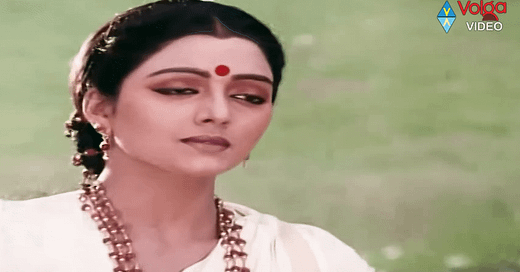


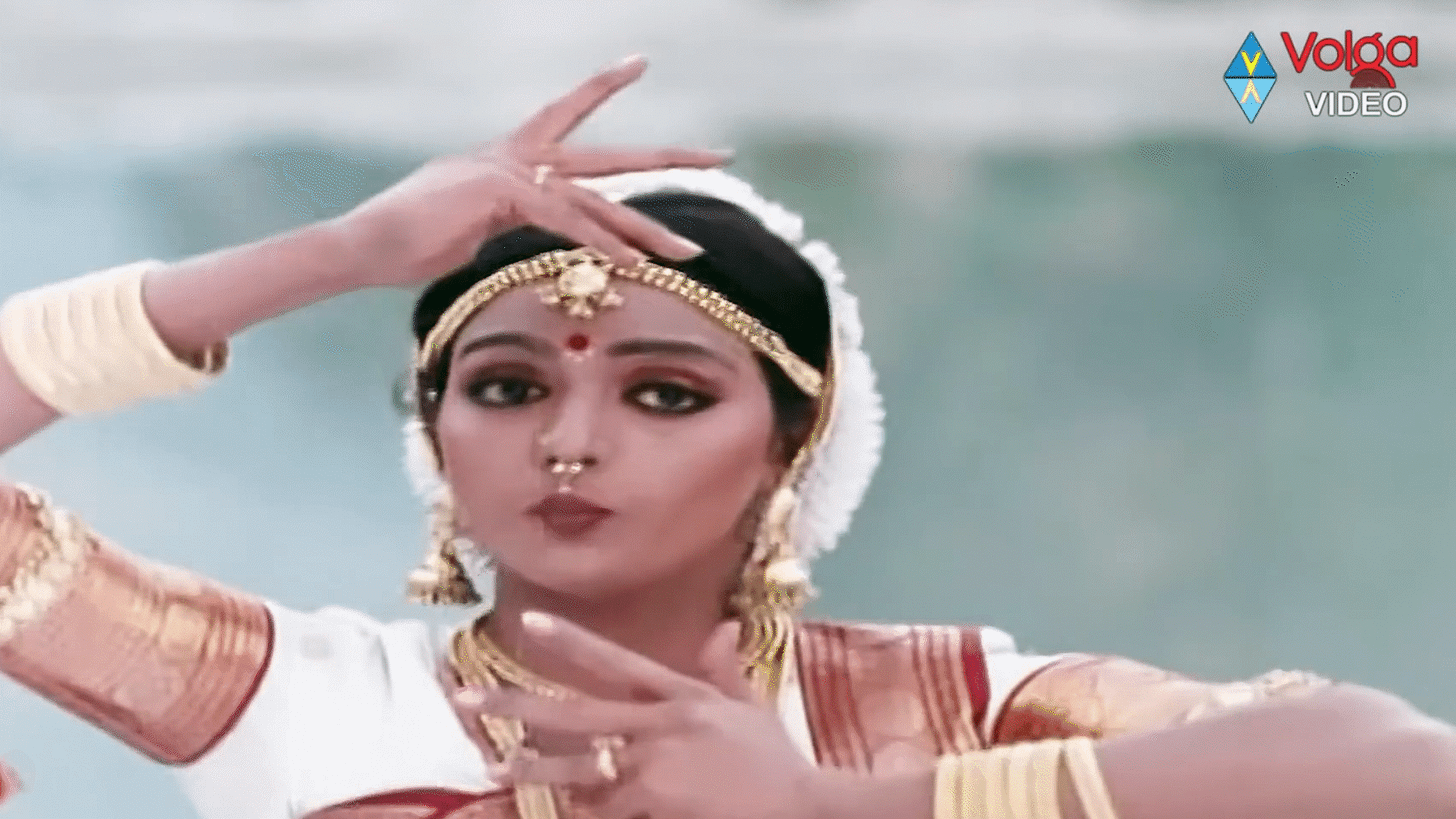
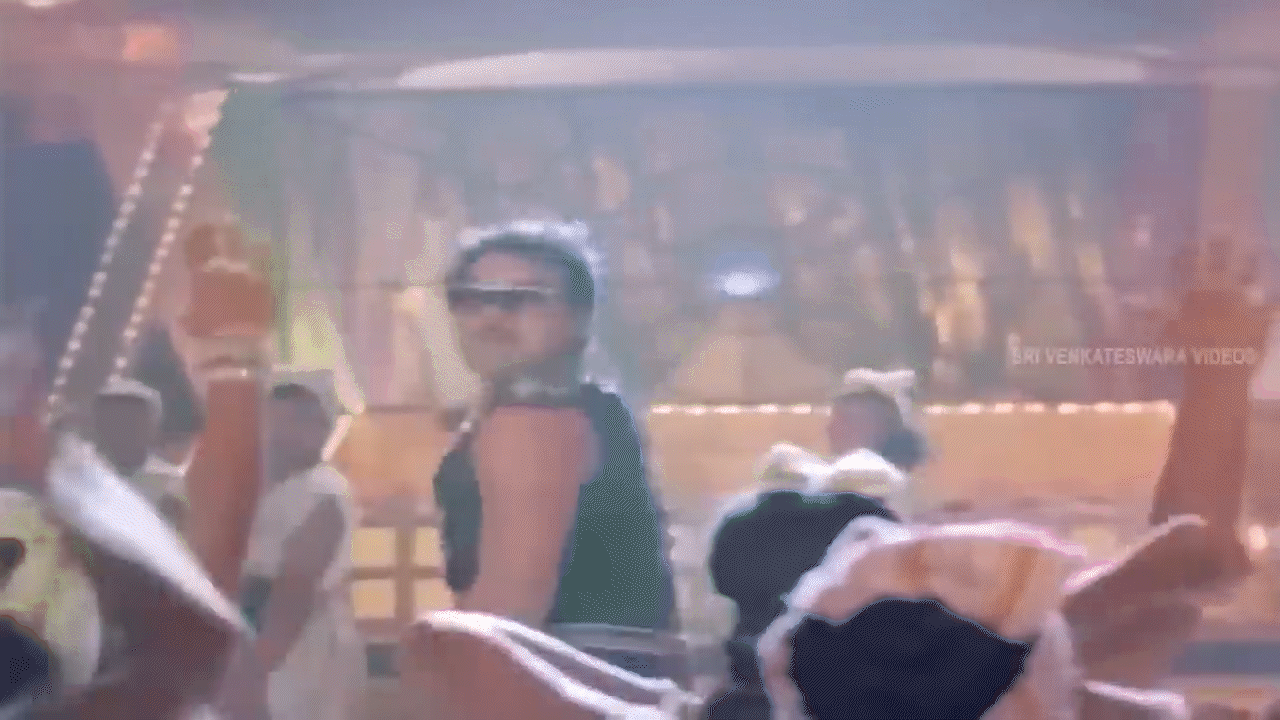
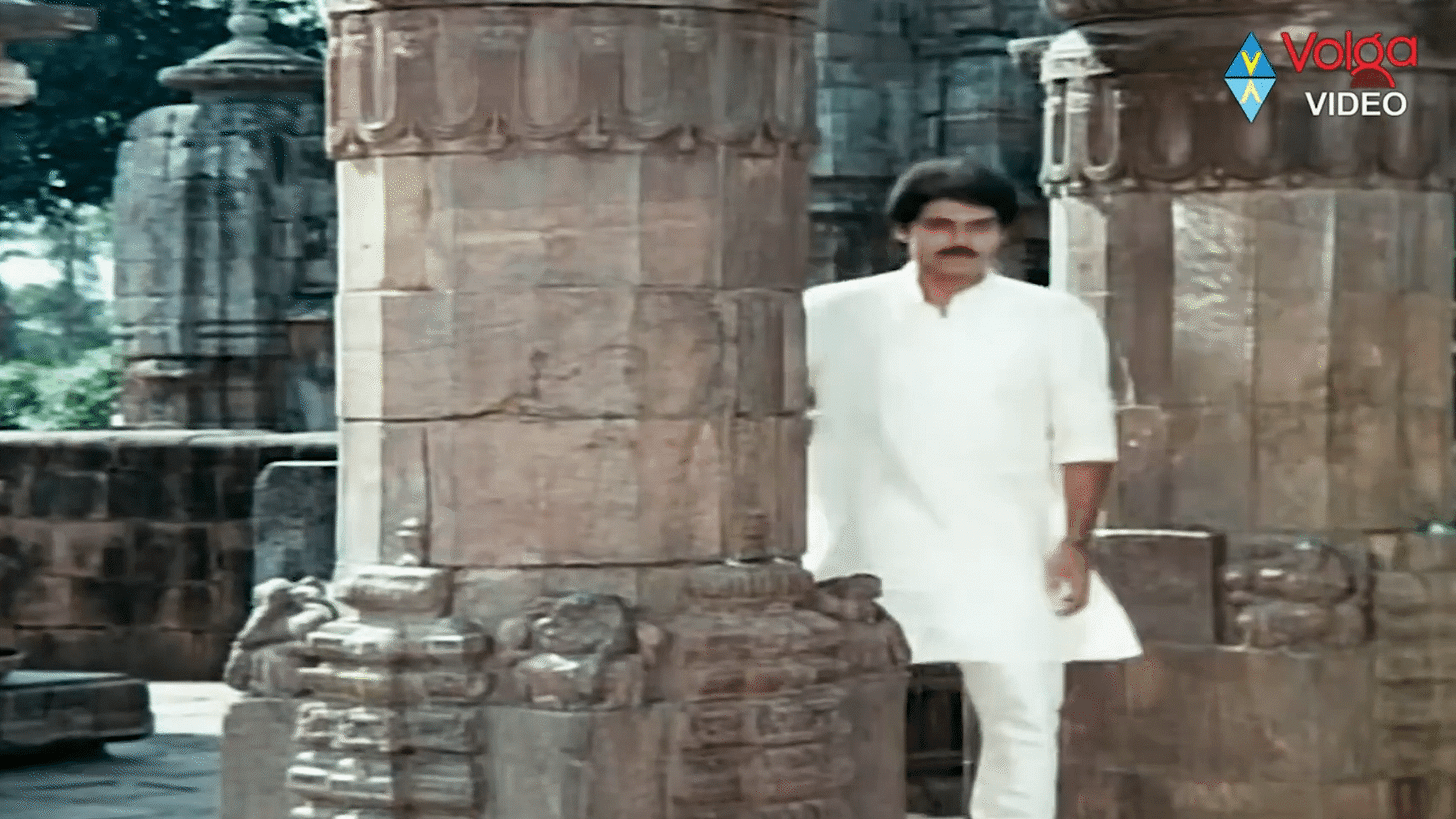

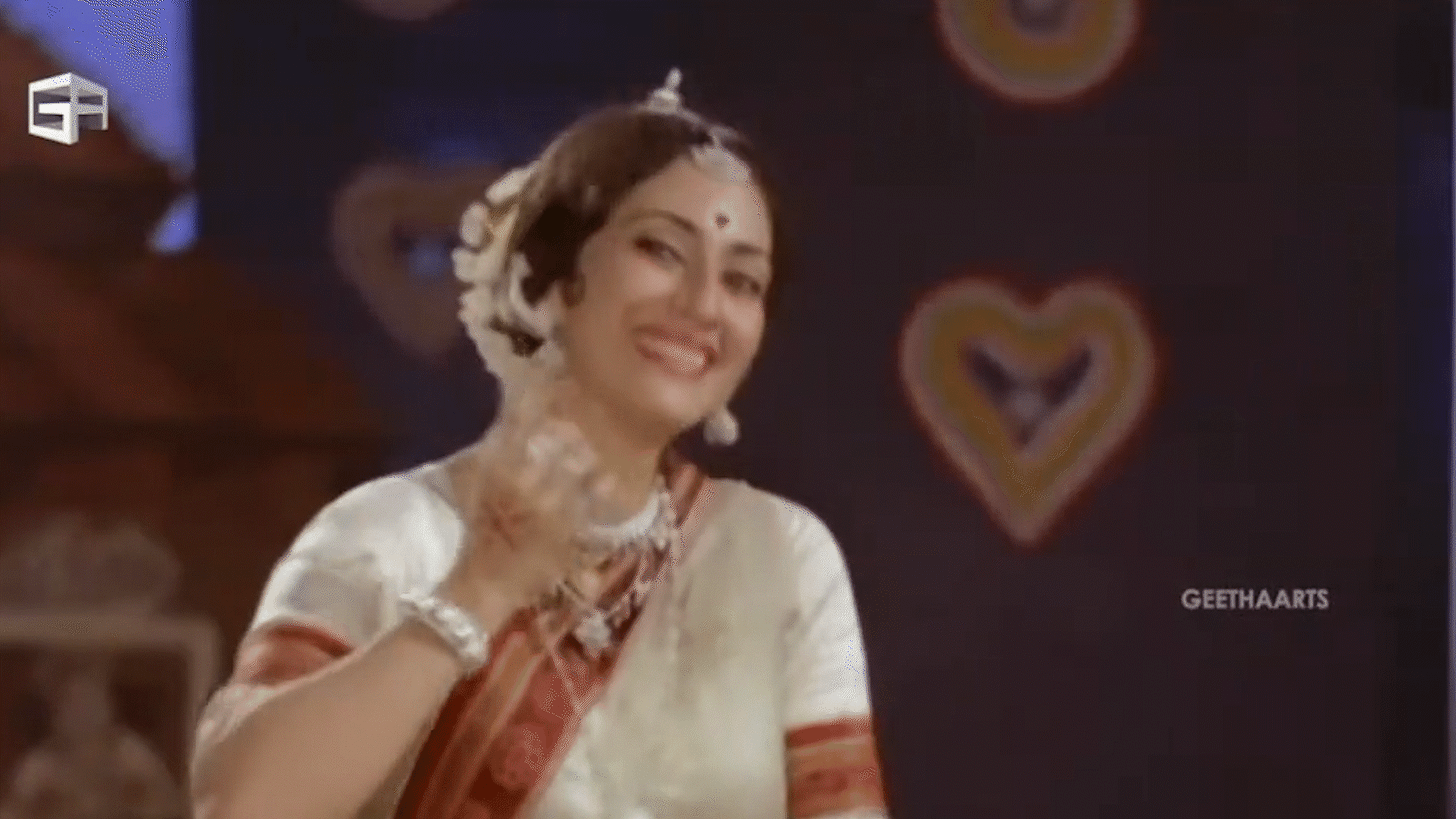

What a lovely take on finding oneself and how beautifully you've captured it! Lots of love to the writer and the editor <3
This article feels like a much needed HUG! Love you to the moon and back Spandi ❤️ and write more!